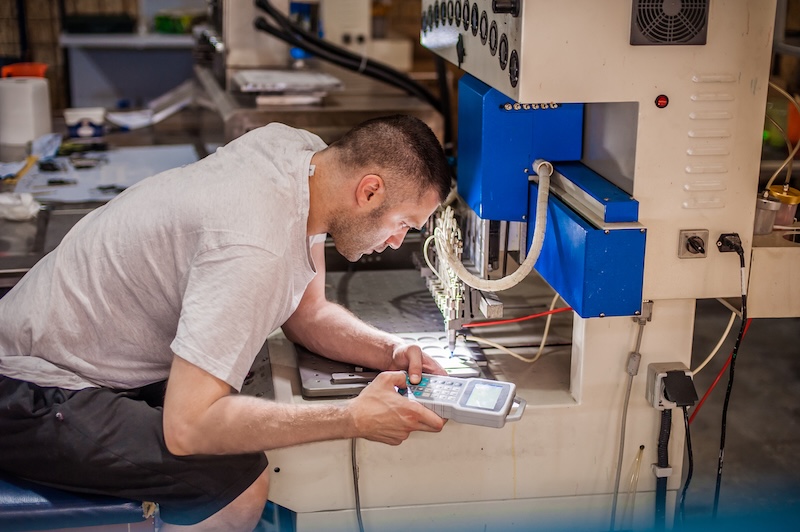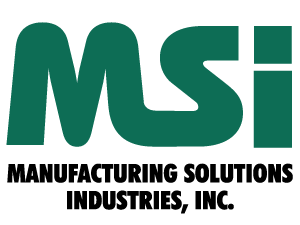
The industrial marking and identification sector continues to witness remarkable transformation as pneumatic marking machine manufacturers push the boundaries of precision, efficiency, and automation. In 2025, these manufacturers are responding to increasingly complex manufacturing demands with innovative solutions that integrate advanced technologies while maintaining the reliability that has made pneumatic systems the backbone of industrial marking operations.
Advanced Control Systems Reshape Industry Standards
Leading pneumatic marking machine manufacturers have revolutionized their product lines by incorporating sophisticated digital control systems. These next-generation machines feature programmable logic controllers (PLCs) that enable precise pressure regulation, timing control, and force adjustment with unprecedented accuracy. The integration of touchscreen interfaces and intuitive software platforms allows operators to configure marking parameters quickly, reducing setup time and minimizing production delays.
Modern pneumatic marking systems now offer real-time monitoring capabilities that track performance metrics, detect anomalies, and provide predictive maintenance alerts. This technological advancement addresses one of the primary concerns in high-volume manufacturing environments where equipment downtime can result in significant financial losses.
Enhanced Precision Through Servo-Pneumatic Integration
The convergence of pneumatic power with servo motor technology represents a significant breakthrough in marking precision. Pneumatic marking machine manufacturers are increasingly adopting hybrid servo-pneumatic systems that combine the reliability and cost-effectiveness of compressed air with the positioning accuracy of servo motors. This integration enables manufacturers to achieve marking tolerances within micrometers while maintaining the speed and force characteristics essential for marking challenging materials.
These hybrid systems particularly excel in applications requiring variable marking depths, complex geometric patterns, or multi-stage marking processes. Industries such as aerospace, automotive, and medical device manufacturing have benefited substantially from these precision improvements, especially when marking critical components that require permanent identification for traceability purposes.
Automation and Industry 4.0 Integration
The push toward smart manufacturing has compelled pneumatic marking machine manufacturers to develop systems that seamlessly integrate with existing automation infrastructure. Contemporary marking machines feature standardized communication protocols including Ethernet/IP, Profinet, and OPC-UA, enabling direct integration with manufacturing execution systems (MES) and enterprise resource planning (ERP) platforms.
These connected systems facilitate real-time data exchange, allowing manufacturers to implement comprehensive quality control measures and maintain detailed production records. The ability to automatically adjust marking parameters based on material specifications, production schedules, or quality requirements has transformed pneumatic marking from a standalone operation into an integral component of intelligent manufacturing workflows.
Material Versatility and Application Expansion
Today’s pneumatic marking machine manufacturers have significantly expanded the range of materials their equipment can effectively process. Advanced tooling designs, improved pneumatic controls, and specialized marking heads enable these machines to handle everything from delicate electronic components to hardened steel automotive parts with equal precision.
The development of quick-change tooling systems allows manufacturers to switch between different marking applications rapidly, supporting the growing trend toward flexible manufacturing. Whether marking alphanumeric codes, 2D matrix codes, logos, or complex graphics, modern pneumatic marking systems provide the versatility required in today’s diverse manufacturing landscape.
Energy Efficiency and Sustainability Focus
Environmental consciousness and operational cost reduction have driven pneumatic marking machine manufacturers to prioritize energy efficiency in their latest designs. Advanced air management systems, including pressure optimization algorithms and energy recovery mechanisms, have reduced compressed air consumption by up to 40% compared to previous generations.
These efficiency improvements extend beyond energy savings to include reduced maintenance requirements and longer component lifecycles. Manufacturers have redesigned critical components using advanced materials and precision manufacturing techniques, resulting in marking systems that maintain performance standards while requiring less frequent service intervals.
Customization and Modular Design Philosophy
Recognizing that no two manufacturing environments are identical, pneumatic marking machine manufacturers have embraced modular design principles that enable extensive customization. Manufacturers can now specify marking force ranges, working envelope dimensions, control system complexity, and integration features to match their specific operational requirements.
This modular approach extends to maintenance and upgrades, allowing manufacturers to enhance their marking systems incrementally as production needs evolve. The ability to retrofit existing pneumatic marking machines with upgraded control systems or enhanced marking heads provides a cost-effective path for manufacturers seeking to modernize their operations without complete equipment replacement.
Quality Assurance and Validation Capabilities
Modern pneumatic marking machine manufacturers have integrated comprehensive quality assurance features directly into their equipment. Vision systems, force monitoring sensors, and marking verification capabilities ensure that every marked component meets specified quality standards before proceeding to subsequent manufacturing stages.
These integrated quality systems provide immediate feedback on marking quality, automatically rejecting defective parts and alerting operators to potential issues before they impact production throughput. The documentation capabilities of these systems support regulatory compliance requirements common in industries such as pharmaceuticals, aerospace, and medical devices.
Future-Ready Technologies and Market Positioning
As manufacturing continues evolving toward greater automation and precision, pneumatic marking machine manufacturers are positioning their products to support emerging technologies such as artificial intelligence, machine learning, and advanced robotics integration. The foundation being laid today will enable seamless integration with future manufacturing innovations while preserving the investment manufacturers have made in current pneumatic marking infrastructure.
The combination of proven pneumatic technology with cutting-edge digital systems ensures that these marking solutions will remain relevant and competitive as manufacturing requirements continue advancing. Manufacturers selecting pneumatic marking systems today can be confident that their equipment will adapt to future technological developments while maintaining the reliability and performance standards that define successful industrial operations.
Contact Manufacturing Solutions Industries, Inc. today to discuss your project requirements.
 Products proudly made in the USA
Products proudly made in the USA